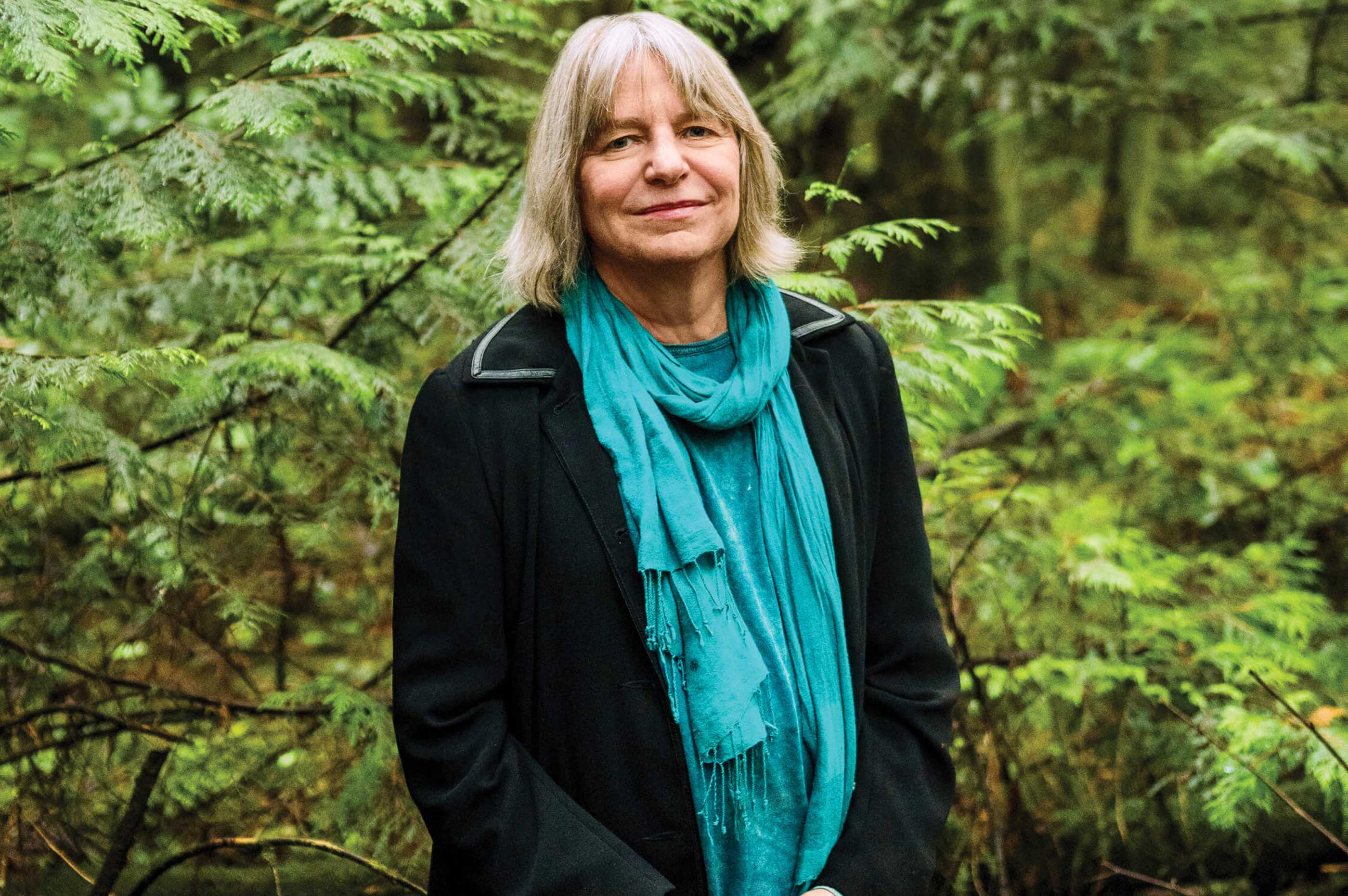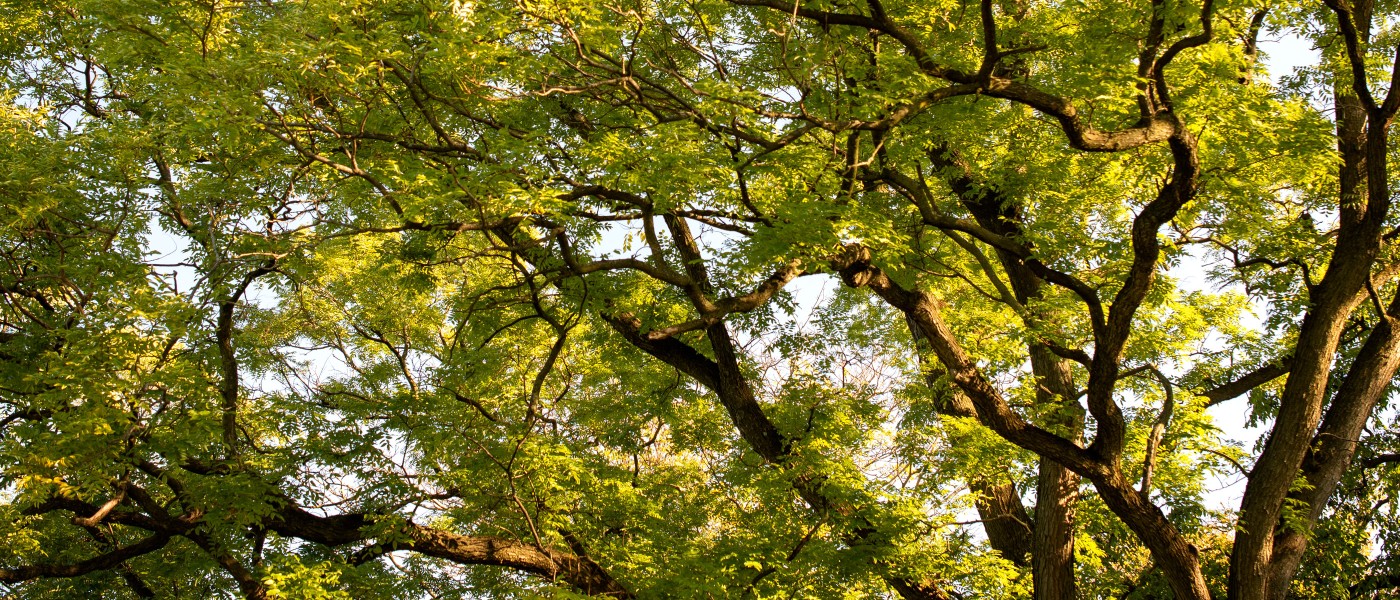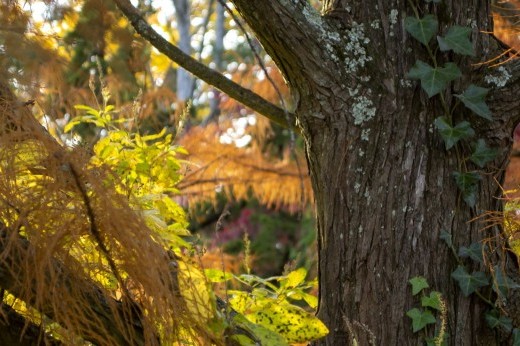Dr. Suzanne Simard, professor of forest ecology at the University of British Columbia in Canada, sparked the popular imagination with her groundbreaking scientific research on fungal networks in forests.
Her work, which suggests that trees can share resources and communicate through underground networks (or a “wood wide web”) of mycorrhizal fungi, helped to inspire Richard Powers’ The Overstory and Peter Wohlleben’s The Hidden Life of Trees—and, more recently, Simard’s own 2021 bestselling memoir Finding the Mother Tree.

Today, Simard leads the Mother Tree Project, a long-term experiment exploring the ecological and climate benefits of protecting large, old trees in forests. She’s also polishing up a sequel to Finding the Mother Tree.
“Finding the Mother Tree was really about discovering the connection of the forest,” says Simard. “Saving the Mother Tree is about, how do we protect these spaces and restore them?”
We spoke with Simard, who is this year’s honoree at Brooklyn Botanic Garden’s Spring Gala, about facing climate change, connecting with forests, and cultivating hope.
This time last year at Brooklyn Botanic Garden, the sky was turning orange from wildfires in Canada. That destruction was preceded by immense forest fragmentation from industrial logging, which inspired your life’s work. What was your experience with those fires like? What were you thinking?
The fires in Canada have been pretty severe and intense since, I would say, 2015. Climate change is an ongoing thing, but it was almost like a threshold had been passed.
Here in British Columbia, where I live, it’s become a way of life. Instead of the summer, we talk about the fire season. Smoke, and the dangers of fire, has really changed a lot about how we live now. So last year, when New York was getting so much of our smoke—you know, it was the worst fire year in Canada on record, but we’ve been living with this for quite a while already.
The good thing is, it’s made people more aware of the situation we’re in with climate change and forest management, and how they come together to create this explosive situation.
How has forest management contributed to climate change and wildfires?
In several ways. One of them, of course, is the clearing of the forest. Not just in Canada—it’s a global problem. When we convert forests to other uses or other managed ecosystems, we release huge amounts of carbon into the atmosphere. I think that we really underestimated the impact of that land use change on greenhouse gases, but it’s been massive.
In Canada, industrial forest management hit a critical point probably in the 50s and 60s and 70s, when clear cutting became the common method of clearing forests. And then planting flammable species over vast areas, and also getting rid of those species that are less flammable or actually resist fire, like deciduous species and old trees and so on.
And then a third thing—suppressing fire. In Canada, Indigenous cultural burning processes that had been in place for thousands of years were outlawed in the late 1800s and early 1900s. And therefore fuels have built up into our forests as well.
So here you have all these things conspiring together to create this perfect storm that we’re in now, which is a flammable landscape.
You’ve watched the decline of these forests that you identify closely with. Many researchers across disciplines are struggling with this. How can we cultivate optimism in these conditions? You seem to have been able to hold on to that a little bit in your writing.
Definitely. Scientists watch these things happen, alarm bells are going off, we’re publishing our articles, and then we watch the decline. And that’s very frustrating.
As people say, and I agree somewhat with this, it’s not so much a scientific problem, because the science has been solid on climate change for a long time. It’s more a sociological problem: How do we put all of that knowledge into action? And so that’s where the work needs to be done.
It also is a scientific problem, from a forestry point of view, because—and this is where the optimism comes in—there’s so much we can do with land. People have been interacting with land, and managing land, since there were people, and there’s a great deal of knowledge about how to do that. It’s ancient knowledge. And it’s also a worldview combined with that knowledge, that worldview being tending the earth instead of exploiting the earth, and having reciprocal, respectful relationships with other creatures.
And that is actually in us already. But we’ve gotten on this other track of economic growth, that we can continue to take and take and take and grow and grow and grow, and it’s just not possible. Every day, old-growth forests are falling, because we have not moved away from that exploitative mentality.
In my lifetime of working in forests, I’ve had the privilege of seeing the good things that we can do in forests, to reestablish diversity and productivity. It can be done. But it takes time, it takes knowledge, it takes careful work, it takes science.
We think a lot about urban forests here in New York City, and the unique challenges that they face. How do you think about that distinction?
Both the wild and the urban forests are extremely important for different reasons.
In the urban environment, it’s really important that people can connect with trees and forests and natural ecosystems. It makes us healthier, and it also makes us care about them, and understand that we have agency in helping these ecosystems.
I went to the Bronx last summer and learned the story of the restoration of the Bronx River. Those stories are so important for people—demonstrating how you can transform in such a short period of time from a very unhealthy system to a very healthy system.
And I feel like the work I do in forests is so affected by attitudes in the city, right? Those have a bigger impact on my landscape than anything I ever do as a forester or as an ecologist, because it’s in cities where policy is getting made.
People in New York have a big say in global policy, in meeting our commitments to international agreements for climate change and biodiversity loss. Those actions are essential to prevent the fires that are coming, or to mitigate them.
But until we do, it’s going to get worse. And I don't like to say that, it sounds very pessimistic. But it’s meant to propel people to act, because I think we deserve a better future.
Even before you wrote Finding the Mother Tree, your work on fungal networks really captured the zeitgeist, and several authors’ imaginations. Now there’s a movie in the works. Why do you think your research has resonated so vividly with the public?
I think we’re in a moment where people are seeing these big changes, and it’s scary, and we need solutions. And not just solutions, but we need action, and we need to put our hearts into this. And I think that what my work has done is show that we are spiritual beings who understand these connections.
I was able to, in the work, demonstrate to people what they already have inside of them, which is this innate connection to land and trees. We’re all connected. So that is a homing message in a way, right? It says, Yeah, you know, these feelings I have inside of me about loving the earth and loving trees, it’s real, and it belongs to us.
That spiritual perspective can be challenging to weigh in on as a scientist, right?
It is true, but it’s absolutely essential that we discuss this. I think that in Western science, for hundreds of years now, we’ve created this almost religious scientific methodology that says we’re separate from nature, that we’re these objective observers. But really, we do bring ourselves into our science, and we should acknowledge that.
All things have this spirit running through them—the air, the water, the rocks, the soil, the animals, the fish, the plants. And we’ve said no, they don’t. And seeing things as objects, pretending that things are not connected, that can result in massive problems.
I have had a really tough time myself, publishing Finding the Mother Tree and having been criticized so heavily, but I will not walk away from it, because it is the essence of what we need to solve climate change, or global change in general. We have to grapple with this.
Western science, Indigenous science, Indigenous knowledge—it’s got to come together, or we’ll continue to make these massive mistakes.
Your book came out three years ago, after other books—Richard Powers’ The Overstory, Peter Wohlleben’s The Secret Life of Trees—featured elements inspired by your research. What made you decide to take your story into your own hands?
A couple things. I’ve wanted to be a writer since I was a kid, so I’ve always had that in me. For years, I just wrote scientific articles, and it was increasingly frustrating, because you have to use a very strict language.
But the other thing was that, you know, other people were starting to write my story. And I thought, they don’t know the story! There is a real story here. I wanted to write this story myself.
I had many reasons for writing it the way I did. And one of them is to say that science is a human thing. I did this work because I came from the forest, and I lived in the forest, and I asked questions because I was seeing things happening. I didn’t just pluck these questions out of the literature. They came from me, and the forests I lived in, and my ancestry.
I also wanted to say something else. All these other writers are men, and this thing I’m talking about is a very female way of seeing the world; it's very different than how I was trained as a forester or a scientist. I was trained by men to think like men, and I saw the forest in a different way.
And so I was bringing in this idea that we are connected, that we’re networked, that we’re collaborative, it’s not just about competition. And I wanted to also tell the story of what it’s like to be a female scientist in this world. We didn’t have professors that were female when I was coming through, and so I wanted to fill that little hole that needed to be filled.
As you mentioned, you had this upbringing that was very entwined with the forest, and then in your book you describe a professional journey that seems very focused and directed. Do you think those two things are related—that having this deep rootedness to the land informed a lifelong dedication to a particular line of inquiry?
Yeah, you absolutely got that right. I think that I’m here for a reason. I didn't really know that when I was in my 20s and 30s or even my 40s.
It came from my ancestors, right? I come from thousands of years of wood cutters in France. And I’ve been able to sort of look back and say, Oh, that makes sense. This has been in my ancestry for a long, long time.
When I finally recognized that and owned it—it’s not like it's ever been really easy, but it made it a little easier on me to understand myself, right? Like, why am I so driven to do this, and now I know that it’s just why I’m here, and I will not stop until it’s time to stop.
What are you still curious to know about trees and forest ecosystems?
My job right now, as I see it, is to help heal the land. And so my big question is, now how do you do that? That’s where I think I can make my contribution.
I’m working with the Nations, with Indigenous people, to restore these lands to whole systems, with the species and the trees and the animals and the fish that are all part of that system—working together with them to figure out how to do this, and to demonstrate to people around the world that you can do this.
Because that hope part has got to be part of the solution, too. When you can demonstrate it, that generates a lot of hope in people, and agency, and then they get out and do it. And that is what we need to do. We just need to get out and do the work.



